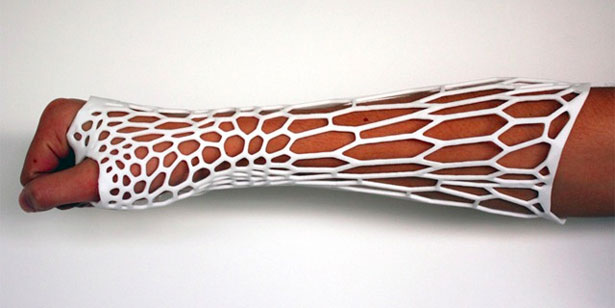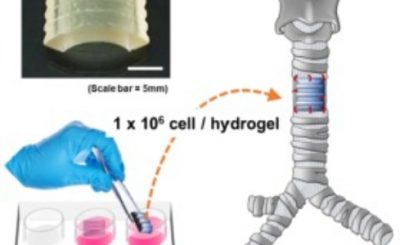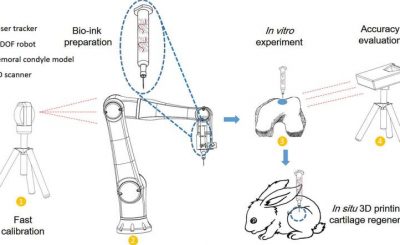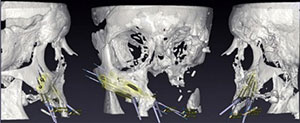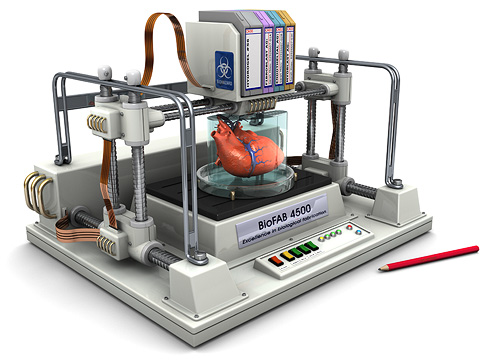Michael Balzer is many things. He’s the host of the 
Photo by 
So, as this Structure Sensor engineer preps to unveil his medical VR app, ORSurgery, at 
With a price under $400, the Structure, designed by Occipital, takes advantage of the iPad’s awesome computing power (and the iPhone 6’s, if you’re an expert like Mike) to create a mobile 3D sensing device. Improving upon the technology PrimeSense developed for the original Kinect (before being acquired by Apple), the Structure Sensor combines with the iDevice’s own camera to capture full-color 3D scans. To improve the quality of the Structure’s scans, Balzer designed 
As Mike showed me over Google Hangouts, by hooking his iPhone 6 + Structure + 4eyes up to his Apple TV, this allows the device to get about 10 cm closer to an object, so as to capture smaller objects in greater detail. Though typical users, like me, might rely on Occipital’s own apps or the powerful and intuitive itSeez3D app, a power user, like Mike has his own app, NEODiSCAN+, which he designed for greater flexibility and control over the scanning process. With a few swipes and button pushes, his app was able to increase the clarity of and color of the scan instantly, fully taking advantage of the combined power of his iPhone and Structure.

A power user, really an unofficial team member, doesn’t just stop with an app and a lens system, though. Balzer has designed an external light for his iPhone, too. The NEODiBRIGHT LED Light Bar shines light all around a subject, reducing shadows and achieving consistent lighting. Given the huge improvements made to the camera on the iPhone 6s, however, Mike envisions, with Nostradamus like certainty, that aspiring filmmakers (and professionals?) will use Apple’s latest phablet for their video projects, for which such a lighting tool, and microphone adapters currently in the works, will be essential.
 Other peripherals, like the NEODiMOUNT Grip & Shoot Handle add extra mobility and functionality to the setup. One interation of the NEODiMOUNT incorporates a Bluetooth connection that gives users the ability to control scans from the device from the handle itself, essentially turning it into a handheld scanner, à la the Artec EVA.
Other peripherals, like the NEODiMOUNT Grip & Shoot Handle add extra mobility and functionality to the setup. One interation of the NEODiMOUNT incorporates a Bluetooth connection that gives users the ability to control scans from the device from the handle itself, essentially turning it into a handheld scanner, à la the Artec EVA.
Occipital, however, isn’t looking just to create a 3D scanning device. Instead the firm wants to set the stage for 
To take advantage of the device’s VR capabilities, the engineer reached out to French VR headset designers 
Now that he had a VR headset to go with his Structure Sensor, it was time for this power user to put it to a powerful use. Mike has since been working on a number of apps that bring depth VR to the iPhone, one of which, in particular, he’ll be demoing at Stanford’s Med X this weekend. Over Google Hangouts, I watched as Mike wore the VR headset and walked around a virtual operating theater, occupied by a team of doctors and a patient whose face bore a striking resemblance to the app’s creator. The heartbeat of the anesthetized patient echoed loudly, while medical equipment bleeped away. The whole time that the engineer explored the VR room, he was also wandering around his living room, thanks to Occipital’s positional tracking algorithms, embedding the user in a virtual environment mapped over the physical one, insuring that Mike wouldn’t bump into an ottoman like Dick Van Dyke.

Though I still haven’t gotten my hands on my own Structure or a new iPhone, Mike did send me a pair of cost-effective VR glasses to follow his video tutorial. Albeit, I couldn’t actually move around the OR room, 
Many of the peripherals for the Structure are already available for purchase on his company’s website (via Square and ecwid), but he’s planning on launching a Kickstarter in the near future, selling the products in bundles. And, while he can make some dough off of all of the effort he put into designing them, it’s heart-warming to know that he’s really trying to create useful and life-enhancing applications for them, too. One such application is helping his wife treat her tumor, about which he and his wife discuss in the TEDx talk below:
If anyone understands the direction that the 3D ecosystem is heading in, its Mike Balzer. As AR, VR, 3D scanning, 3D printing, and haptic devices merge into a single mixed reality network of devices, Balzer will be well-prepared to bring objects from the physical world, into the digital and vice versa. In fact, in the future, we may look back on his efforts as one of the pioneers of the mixed reality space in the first place.
